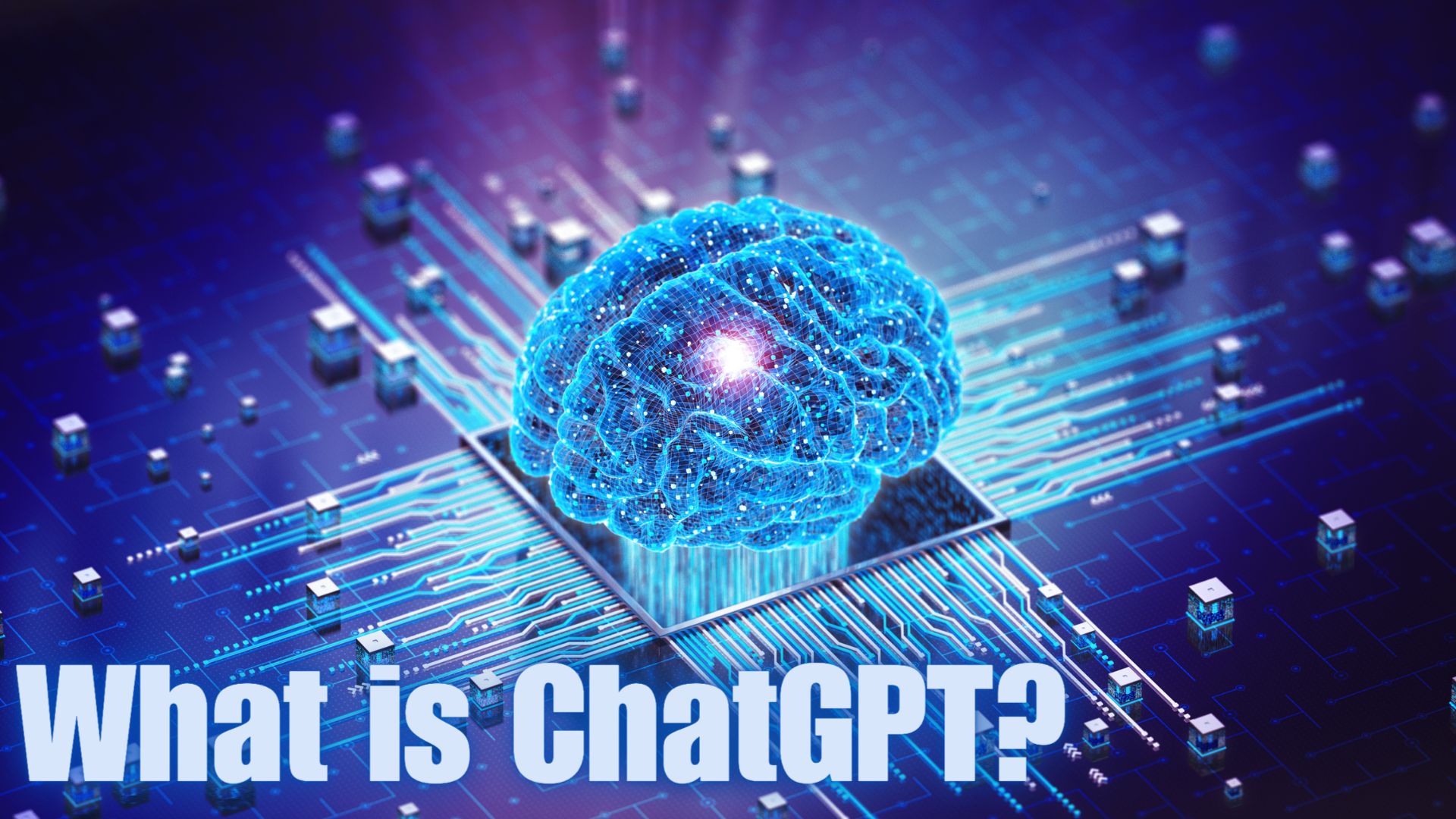What Is ChatGPT? A CIO’s Guide to Understanding AI Language Models
In recent years, there has been a growing interest in implementing artificial intelligence (AI) solutions in businesses. One such technology that has captured the attention of numerous Chief Information Officers (CIOs) is ChatGPT. This generative pre-trained transformer model goes beyond traditional chatbots and natural language processing (NLP) tools, offering a broad range of applications that can help optimize various aspects of business operations.
Developed by OpenAI, ChatGPT benefits from cutting-edge machine learning algorithms and a wealth of data, enabling it to generate human-like responses and perform various text-based tasks. As CIOs seek innovative and efficient ways to streamline their organizations’ workflows, ChatGPT offers promising opportunities for achieving a competitive edge in the rapidly evolving AI-driven business landscape.
Key Takeaways
- ChatGPT can enhance business operations through advanced language understanding and generation capabilities
- Integration of this AI tool can provide CIOs with significant opportunities to optimize workflows
- While offering tangible benefits, ChatGPT may still present challenges and limitations that should be taken into account

What Is ChatGPT?
ChatGPT is a sophisticated language model created by OpenAI. It uses advanced artificial intelligence to generate human-like text responses, enabling users to interact intuitively with the system. As a CIO, you should be aware of the potential applications of ChatGPT in your business operations.
Compared to earlier models, like GPT-3.5, ChatGPT offers improved performance and higher accuracy. This is achieved through cutting-edge techniques in natural language processing and machine learning. The model can comprehend context, interpret queries, and generate context-aware, coherent answers.
You can implement ChatGPT in various use cases, including customer support, content generation, and even as an idea generation tool. The model’s versatility makes it a valuable addition to your tech stack, boosting efficiency and empowering your teams to make data-driven decisions without needing deep technical expertise.
Integration Benefits for CIOs
Efficiency Boost
By integrating ChatGPT into your business processes, you will experience a significant efficiency boost. This AI technology can handle tasks such as answering customer queries, processing language inputs, and generating human-like responses. Due to its self-learning capabilities, ChatGPT becomes more efficient over time, ultimately enabling your team to focus on strategic, high-value activities.
In addition, you can easily customize ChatGPT to meet your company’s specific needs. This flexibility allows for seamless integration with existing systems, ensuring a significant increase in the overall functionality of your organization.
Cost Reduction
Another advantage you will enjoy with the integration of ChatGPT is the considerable cost reduction. The AI-driven communication tool minimizes the need for a large customer support workforce, thus lowering your operational expenses. Furthermore, ChatGPT’s round-the-clock availability reduces the pressure on your employees to stretch beyond regular working hours, minimizing overtime-related costs.
Additionally, the continual improvement of ChatGPT’s performance, thanks to its learning capabilities, ensures that the enhanced efficiency does not compromise the quality of customer interactions. This cost-saving and high-quality service balance will position your organization for sustained success.
Key Technologies Behind ChatGPT
To understand ChatGPT, it’s essential to be aware of the key technologies behind its creation:
Transformer Models: ChatGPT is based on transformer models, an essential breakthrough in natural language processing. These models enable deep learning algorithms to process vast amounts of textual data effectively. With self-attention mechanisms, transformers better understand context and language patterns, ensuring a higher quality of the generated text.
OpenAI’s GPT-4: ChatGPT is built on OpenAI’s Generative Pre-trained Transformer 4 (GPT-4), one of the most advanced language models available. GPT-4 is pre-trained on an extensive dataset, allowing it to grasp the nuances of language and generate coherent responses to complex queries in various contexts. Your organization can leverage ChatGPT to achieve an impressive conversational AI experience.
Fine-tuning: Fine-tuning is crucial in transforming the base GPT-4 model into ChatGPT. The process involves training the model with a curated dataset and optimizing it for response relevance and safety. In your CIO role, understanding the intricacies of fine-tuning will help you appreciate ChatGPT’s capabilities and align them with your organization’s objectives.
Reinforcement Learning from Human Feedback (RLHF): ChatGPT utilizes reinforcement learning from human feedback to continually improve its responses. By incorporating user feedback in the form of ratings or comparisons, ChatGPT becomes more adept at providing safer and more relevant replies. This technology ensures that you can confidently deploy ChatGPT as a CIO, knowing it constantly evolves to serve your organization better.
By considering these key technologies, CIOs can better position themselves to evaluate and implement ChatGPT within their organizations.
Use Cases for Enterprises
Customer Support
As a CIO, implementing ChatGPT in your customer support operations can greatly enhance the efficiency and effectiveness of your support team. ChatGPT can be utilized to:
- Handle customer inquiries: Deploy an AI-powered chatbot that addresses common questions, resolves issues, and provides timely information, freeing up time for your support agents to focus on more complex tasks.
- Improve response times: Reduce customer wait times by instantly generating accurate and helpful responses using ChatGPT’s natural language understanding capabilities.
- Multilingual support: Cater to a diverse customer base by employing ChatGPT to offer support in multiple languages.
Internal Collaboration
Integrating ChatGPT into your organization’s internal collaboration efforts can drive innovation, streamline workflows, and foster stronger teamwork. Here’s how:
- Knowledge sharing: Implement AI assistance to help employees easily access internal knowledge bases and resources to find crucial information efficiently.
- Content generation: Leverage ChatGPT for drafting emails, creating reports, or writing project proposals, allowing your employees to focus on more strategic tasks.
- Brainstorming: Encourage collaboration by utilizing ChatGPT’s conversational capabilities to elicit new ideas and solutions from employees across departments.
Deployment and Customization
Deploying and customizing ChatGPT is a straightforward process for your organization. To begin with, you can access the API provided by OpenAI, which allows you to integrate the model into your existing applications and systems. This gives you the flexibility to utilize the power of ChatGPT in various use cases, ranging from customer support to content generation.
As a CIO, you can fine-tune ChatGPT on your specific domain to increase its efficacy for your business needs. By providing domain-specific data and examples, you can train the model to perform better in certain tasks or industries. Moreover, you can use reinforcement learning from human feedback to help the model learn and improve over time.
It’s essential to be mindful of data privacy and compliance when deploying and customizing ChatGPT. Ensure that the data used for training is anonymized and all sensitive and personal information is removed. This practice will help you maintain compliance with data protection regulations while upholding customer trust.
While deploying ChatGPT, consider continually incorporating monitoring and evaluation practices to assess the model’s performance. This allows you to track the model’s effectiveness, identify improvement areas, and make informed decisions on further customization.
In summary, deploying and customizing ChatGPT involves API integration, domain adaptation, reinforcement learning, data privacy compliance, and performance monitoring. By considering these factors, you can harness the potential of ChatGPT effectively in your organization.
Limitations and Challenges
As a CIO exploring ChatGPT, it’s important to understand its limitations and challenges. While ChatGPT has the potential to revolutionize customer support, content generation, and more, there are some constraints that you should be aware of.
First, ChatGPT can sometimes produce plausible-sounding but incorrect or nonsensical answers. This stems from the model’s lack of a deep understanding of the input it processes. As a result, you should always fact-check and review any content generated by ChatGPT, especially when using it for critical business tasks.
Second, the model might be sensitive to the input phrasing, meaning that slight changes in the input can result in different responses. This could result in inconsistencies and confusion when implementing AI into customer support or content generation platforms. To mitigate this issue, consider monitoring and refining the input phrasing to maintain a consistent user experience.
Third, ChatGPT can be excessively verbose and may overuse certain phrases. This could lead to repetitive content that affects the quality of output. You might need to edit or rephrase the generated text to meet your quality expectations and maintain readability.
Lastly, while efforts have been made to implement safety mitigations, ChatGPT can occasionally respond to harmful instructions or exhibit biased behavior. To prevent harm and preserve your company’s reputation, it is essential to closely monitor the model’s output and enforce moderation measures if needed.
Consider these limitations and challenges while incorporating ChatGPT into your organization’s tech stack.








